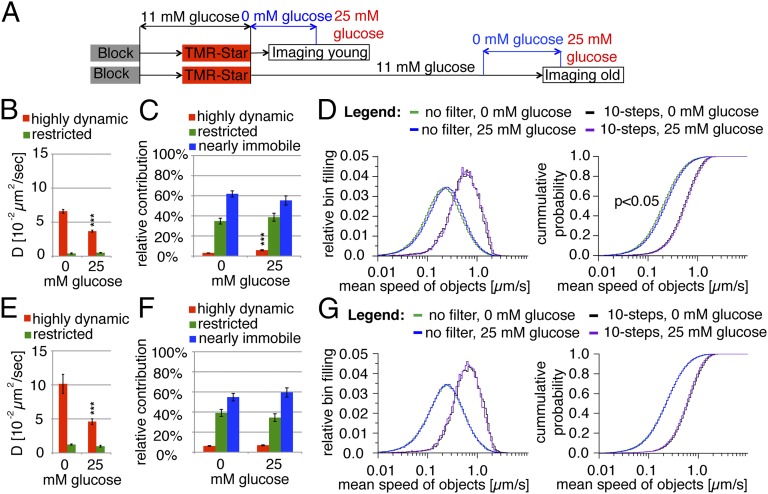Fig. 2.
Glucose stimulation increases the frequency of young but not old highly dynamic SGs. (A) Schematic representation of the labeling (as in Fig. 1A) and resting (0 mM glucose) and stimulation (25 mM glucose) protocol. (B) Diffusion coefficients of young highly dynamic and restricted Ins-SNAPTMR-Star+ SGs in resting and stimulated cells. (C) Relative contribution of the dynamic components to the collective dynamics of young Ins-SNAPTMR-Star+ SGs in resting and stimulated cells. (D) The collective and processive mean speed of young Ins-SNAPTMR-Star+ SGs shown as normalized distribution (Left) and cumulative probability (Right). (E) Diffusion coefficients of young highly dynamic and restricted old Ins-SNAPTMR-Star+ SGs in resting and stimulated cells. (F) Relative contribution of the dynamic components to the collective dynamics of old Ins-SNAPTMR-Star+ SGs in resting and stimulated cells. (G) Collective and processive mean speeds of old Ins-SNAPTMR-Star+ SGs shown as normalized distribution (Left) and cumulative probability (Right). The figure presents the data obtained from three independent experiments counting 19,176 tracks in 57 resting cells and 24,868 tracks in 32 stimulated cells for young SGs and three independent experiments counting 6,917 tracks in 35 resting cells and 5,608 tracks in 25 stimulated cells for old SGs.

